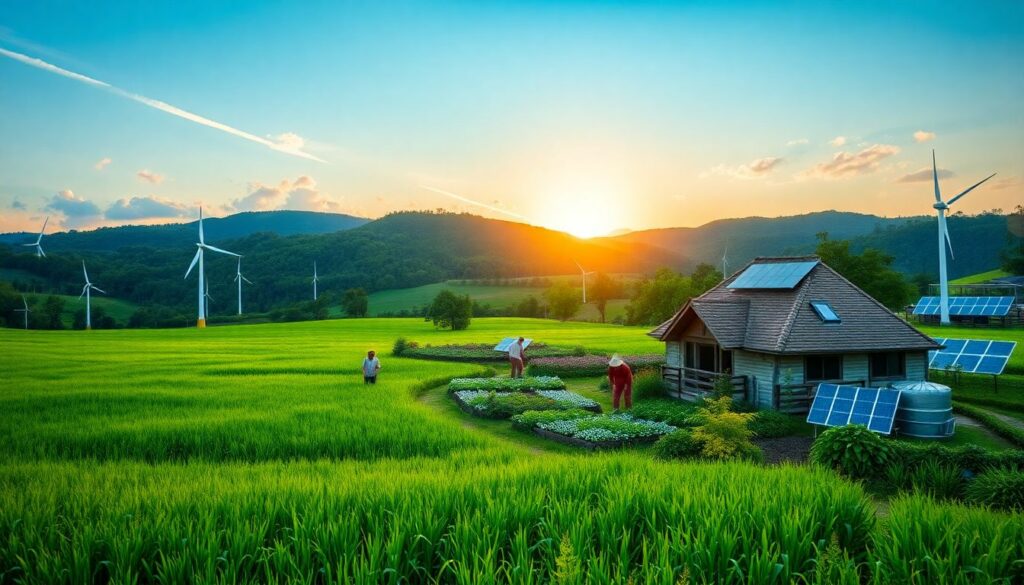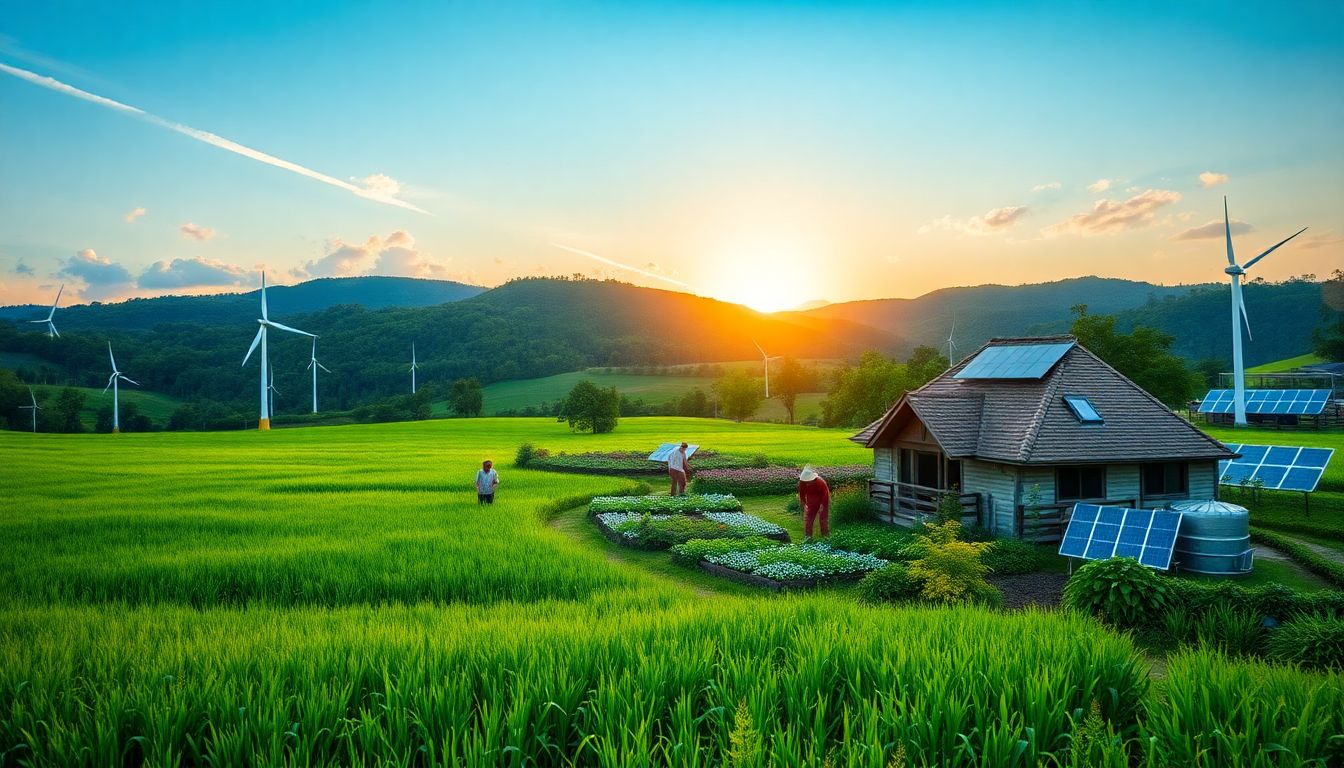
Table of Contents
Introduction
Climate change, dwindling resources, and pollution put our planet at risk. It’s clear we need to change how we live and work to protect Earth. More people are now asking for eco-friendly products and services. Businesses and communities that adopt sustainable practices can reduce harm to the environment while gaining economic and social benefits. Taking steps toward sustainability isn’t just good for the planet — it’s good for everyone.
Understanding Sustainable Practices
What Are Sustainable Practices?
Sustainable practices are actions that protect our environment, promote social fairness, and support economic growth. This means working in ways that don’t hurt future generations. Sustainability has three main parts: caring for nature, treating people fairly, and making sure businesses can grow without destroying the planet.
The Importance of Sustainability in Today’s World
Unsustainable habits like excessive waste and pollution harm our climate and health. Climate change leads to more storms, droughts, and floods. Species lose their homes, and food supplies face risks. The world has global goals, called the UN Sustainable Development Goals, to fight these issues. Following sustainable practices helps reach these goals and creates a better future.
Key Principles of Sustainable Development
- Reduce, reuse, recycle: Cut waste by minimizing consumption, reusing items, and recycling materials.
- Circular economy: Design products so they can be reused or remanufactured instead of discarded.
- Life cycle thinking: Consider a product’s entire journey — from raw material to disposal — to lessen its environmental impact.
Implementing Sustainable Practices in Business
Sustainable Supply Chain Management
Companies must choose suppliers that follow ethical and eco-friendly methods. This reduces overall carbon emissions. For example, Patagonia sources materials responsibly to ensure environmental and social standards are met.
Green Operations and Manufacturing
Switching to renewable energy sources like solar and wind helps cut emissions. Using eco-friendly materials and reducing waste makes production more sustainable. The International Renewable Energy Agency highlights that energy efficiency boosts profits and lowers costs.
Employee Engagement and Corporate Social Responsibility
Training staff about sustainability builds awareness. When employees understand their impact, they take part in eco-friendly actions. Many companies create a culture of responsibility, making sustainability part of their core values.
Certifications and Standards
Certifications such as LEED for buildings, B Corporation for ethical companies, and ISO 14001 for environmental management boost that company’s credibility. These labels show commitment to sustainability and attract conscious customers.
Sustainable Practices in Agriculture and Food Production
Organic Farming and Regenerative Agriculture
Organic farms avoid harmful chemicals and focus on healthy soil. Regenerative practices improve soil health and capture carbon, helping fight climate change. The Rodale Institute shows how regenerative farming increases yields and supports biodiversity.
Water Conservation and Waste Management
Efficient irrigation reduces water use, while composting turns waste into helpful soil. Wasting less food and optimizing supply chains also cut down on food waste, saving resources and reducing greenhouse gases.
Support for Local and Sustainable Food Systems
Supporting Community Supported Agriculture (CSA) connects farmers with consumers directly. Incorporating more plant-based foods reduces meat’s environmental footprint and helps conserve water and land.
Sustainable Practices in Energy and Transportation
Transition to Renewable Energy
Using solar, wind, hydro, and geothermal power cuts reliance on fossil fuels. Decentralized energy systems like microgrids make power more reliable and accessible everywhere.
Sustainable Transportation Solutions
Electric cars, improved public transit, and biking infrastructure decrease pollution and traffic congestion. Governments offer incentives to encourage greener travel options, making it easier for everyone to choose sustainable mobility.
Energy Efficiency Technologies
Smart grids, LED lighting, and better insulation help homes and businesses use less power. Small actions, like switching to energy-efficient bulbs, add up over time.
Role of Policy, Community, and Education
Government Policies and Incentives
Subsidies for renewable energy, carbon pricing, and strict pollution laws push industries to change. When governments support green initiatives, more companies follow suit.
Community Initiatives and Grassroots Movements
Urban greening projects, city gardens, and local recycling programs make neighborhoods better places to live. Citizen science and volunteer efforts help raise awareness and spread sustainable ideas.
Education and Awareness
Teaching kids about sustainability helps build a future generation that cares for the planet. Individuals can adopt eco-friendly habits like reducing plastic use, conserving water, and choosing sustainable products.
Challenges and Future of Sustainable Practices
Barriers to Adoption
Cost can be a hurdle for some companies. Lack of awareness or access to green technologies also slows progress. Education and innovative financing can help overcome these barriers.
Innovation and Technology in Sustainability
AI, Internet of Things (IoT), and blockchain are changing how we manage resources. Green tech like bioengineered crops and circular economy solutions are creating new ways to be eco-friendly.
Vision for a Sustainable Future
Experts say governments and industries will continue to promote policies that support green growth. We all can contribute by making smarter choices daily and supporting businesses committed to sustainability.
Conclusion
Adopting sustainable practices is vital to protect our environment, support communities, and ensure a healthy economy. Businesses, individuals, and governments all have a role to play. From choosing renewable energy to reducing waste, every small step counts. To build a better future, start today — embrace sustainability and help secure a greener world for generations to come.
